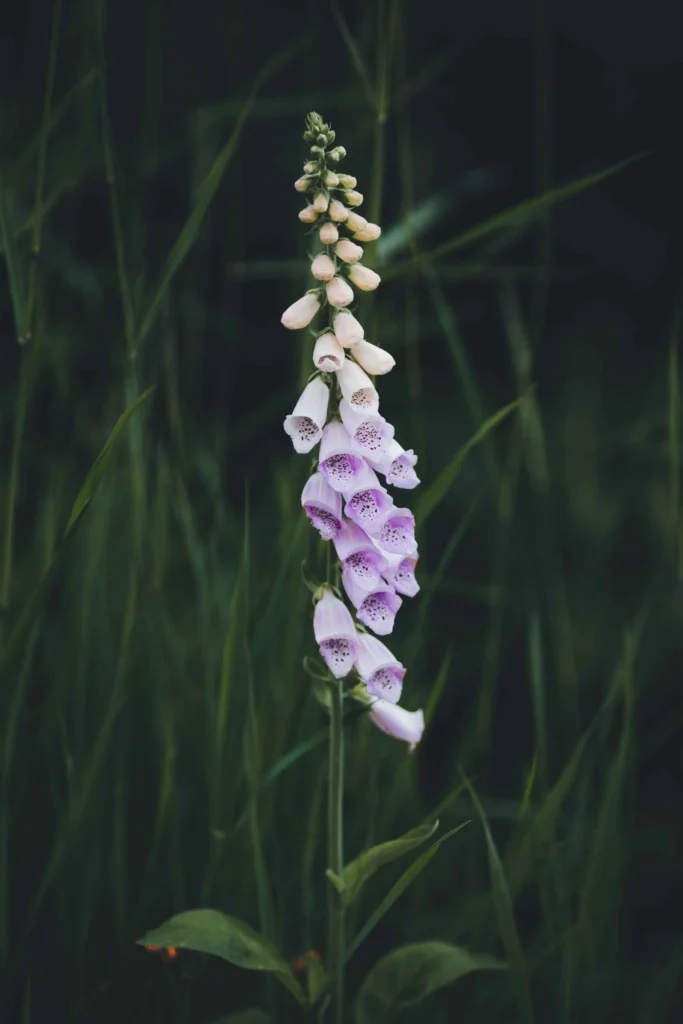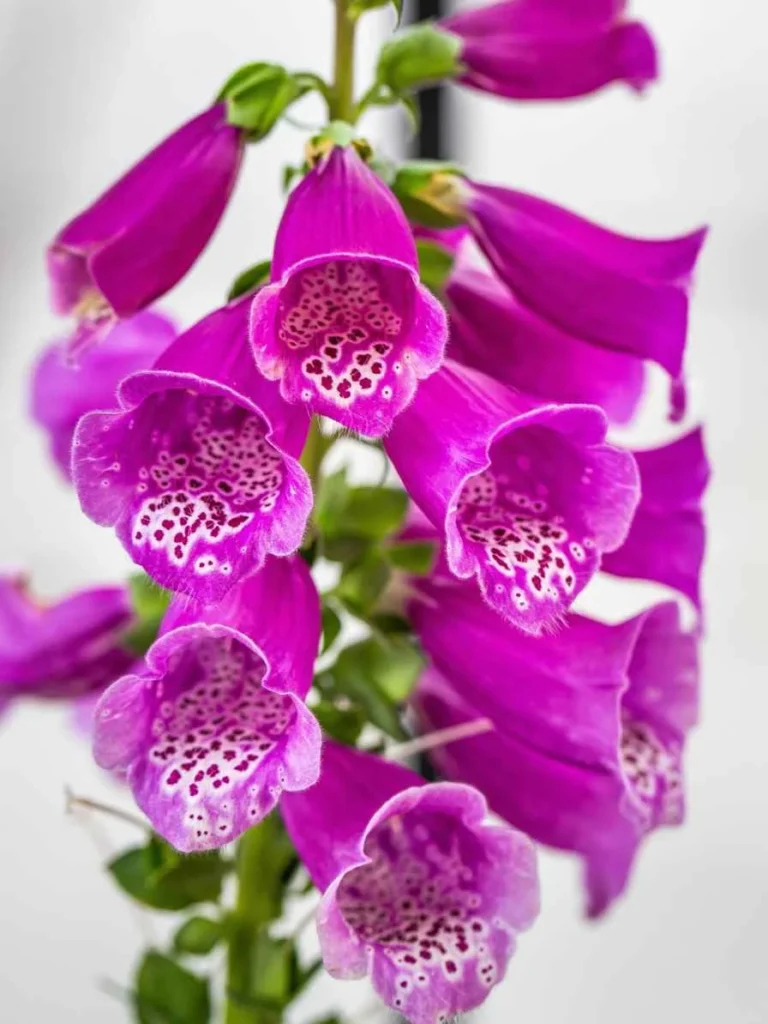The foxglove is a unique and colorful flowering plant. It has a bell or tubular-shaped flower, which is usually purple or white. The name foxglove is derived from English origin and indicates the shape of a flower that can fit on the fox paw.
The foxglove belongs to the genus Digitalis, whose botanical name is Digitalis purpurea. This plant can fill your garden with a beautiful texture. It is biennial, but some cross varieties are also perennial.
How To Plant Foxglove Seeds In Pots
The plant has seed-bearing flowers. It can grow from its seeds quickly. But how can we grow its seed in pots?
Before we discuss the method of planting foxgloves, we should know some facts about foxgloves:
What is the best time to plant Foxglove?
You can plant them from April to July. It is a biennial, so it flowers once a year, but its seeds grow irregularly for whole years. It makes them appear perennial.
You can plant another variety in late summer or fall. The harvesting of the previous year’s plant foxglove seeds can be done in May or June.
What is the best place and condition to plant foxgloves?
The best place to plant foxgloves is under full sun or partial shadow. The plant has an extensive range of forbearance for soil types. It can be produced in many soil types.
The best condition is to plant foxglove in moist soil, which has an abundance of organic manure. If the soil is poor in organic matter, you can add some fertilizer to make it perfect for foxglove’s plantation. Do not add excessive fertilizer, as it can result in the growth of leaves instead of flowers. The best Soil pH should be between 5.5. To 6.5.
The foxglove plant should be provided water regularly during germination, especially on dry summer days. Do not use excess moisture that can lead to plant diseases.
Another condition is providing the best temperature to the foxglove seeds, which is about 70 degrees Fahrenheit.

How to Obtain Foxglove Seeds?
Once you start thinking about planting it in your home or garden, you must have to collect or gain its seeds from any source. The usual source of seeds can be the previous year’s foxglove plant. You can also get seeds from a nursery.
You can plant the foxglove through a seedling from a nursery. It can help you to decrease your seed germination care period.
The plant can flower after one year of plantation. In the following years, when its flowers bloom, the plant dies. Now its seeds can be collected and sown for the next plant.
The best method to collect seeds from the foxglove plant:
The seeds of the foxglove plant can be collected in the following way:
- Wait for the ripening of the plant
- In May or early June (Mid Summer), the foxglove flowers ripe
- When the seed buds start to dry, you can harvest the seeds
- Wear gloves while harvesting its seeds
- Take a plastic container and place it under the plant
- Shake off the seed bud with your hands
- Collect the seeds and save them in a dry place until the next plantation
- You can destroy the plant now, as it will not produce flowers again
Is it right to plant foxglove seeds in a pot?
Yes, the foxglove can be planted in a pot or container. It doesn’t take up a lot of space.
Those with no garden or proper place for growing foxglove seeds can try this technique. It can help them. The pot’s side should be large as the foxglove’s height is 5 feet and width is 1 foot.
After one year of the plantation, it finally blooms. Now you can transfer to other places.
Foxglove growing in the pot
You should follow this method to sow and plant your foxgloves seeds in the pot or container:
- Take a pot of adequate size, which has a 12-inch depth.
- The pot should have drainage holes.
- Put some soil in the pot.
- The soil must contain organic matter.
- Mix the soil very well.
- Now place the seeds on the soil in the pot
- Gently press them, don’t use force.
- The seeds must germinate in the presence of light.
- You should place the pot in full sun or partial shadow.
- Before germination, keep the pot moist.
- Keep the foxgloves seeds at 65-75° F during germination.
- The germination process will be completed in 12 to 14 days.
- You can now see the seedlings.
- You can plant these seedlings outside of the container if you want to.
- The foxglove will flower next year after blooming.
- You should wait for its full blooming.
- Now collect seed after the plant die.
- Use these seeds for the next flowering season.
- You can also use these seeds to sow in the soil in any garden.
How to Transplant Foxgloves?
You can transplant foxglove from one location to another in the following way:
- Dig a hole in proper moist soil.
- Take out the plant from the previous location.
- Place foxglove in the hole.
- Fill it and Irrigate it properly.
- Add some organic manure to it to keep it enriched.
What are the varieties of the foxgloves plant?
There are wide original varieties of the foxgloves plant (Digitalis Purpurea). Hybrid varieties are also famous in the market.
We will discuss some best varieties here:
Foxy
Its height is 2 to 3 feet, and it can bloom in the first year. Its flowers are of purple, rose, and white color.
Camelot
It also blooms in the first year. Its flower has rose, lavender, and white color.
Candy Mountain
It has a long upward stalk with rose and purple flowers.
Goldcrest
This variety has yellow-peach flowers. It also has green leaves.
Is foxglove poisonous?
Yes, the foxglove contains the drug Digitoxin which is fatal for the human heart.
Research shows that a heart medication Digitalis is obtained from the foxglove plant. This medicine regulates the human heart rhythm. Cardiologists say the excessive use of Digitalis is fatal for the human heart. It can cause death.
So one should prevent accidental eating of the plant. Many people might have skin allergic reactions also. They should also avoid touching this plant. The foxglove plant may look beautiful in the garden or home, but be aware of its poisonous nature.

How to take care of foxglove during blooming and flowering?
The foxglove can be grown in stabilized conditions mentioned above. Once it is planted, you should have to take care of the foxglove by following methods:
Overwintering
The foxgloves plants can not stand the cold temperature in fall or winter. These foxgloves, now first-year plants, should be covered with leaves and mulch to prevent the cold and moderate the soil temperature.
You can use dead plants for this purpose. Remember to Remove these excessive dead plants after winter in spring to avoid any kind of plant disease.
Trimming
The foxglove plant should be regularly trimmed throughout the season. Old previous dead plants should be removed over the season. These can affect the new variety.
However, if you want to make them self-seed, you can allow them to stay.
Staking or supporting
Once the foxglove plant is established, the stem can grow downward due to gravity, wind, or other factors. To keep them in an erect position, you can use a stake or a support system.
Care of foxglove from diseases
Many diseases can appear on foxglove like dark spots, flower wilting, etc.
Pests cause these diseases. Some common ailments with their cause are mentioned below:
Flower buds wilting
Aphids can attack the initial flower buds of the foxglove. These can destroy the plant. After flowering, you should take care of foxglove and remove any aphids you see immediately.
Powdery Mildew:
Fungal species cause this disease. Warm weather and dry soil can cause this disease. You can also solve the problem by adequately draining soil and air circulation. You should spray your plant immediately.
Dark spots on foxglove’s leaves:
Fungal diseases also cause the dark spots on the foxglove to leave. Try to remove any leaf with this condition immediately. Some rotten leaves can affect the whole plant.
Some Common Problems and their Solution:
No flower on foxglove plant
If there are no flowers on the fox glove, try to indicate the variety of the fox glove. If this is a biennial, it will flower in the second year of planting. Start monitoring your foxglove plant to know the exact problem, whether the water or nutrient deficiency or nutrient excess results in leaf growth instead of flower growth.
Foxglove plant is in poor condition
If your foxglove plant is looking in poor condition and is turning down, you can trim it from the base to make it neat, you can also remove its flower stalk, and the next flower stalk will grow healthier.
HOW TO GROW RED YUCCA FROM SEED
Sources
https://www.gardeningknowhow.com/ornamental/flowers/foxglove/growing-foxglove-in-containers.htm
https://www.thespruce.com/tall-toxic-foxglove-plants-2132588

